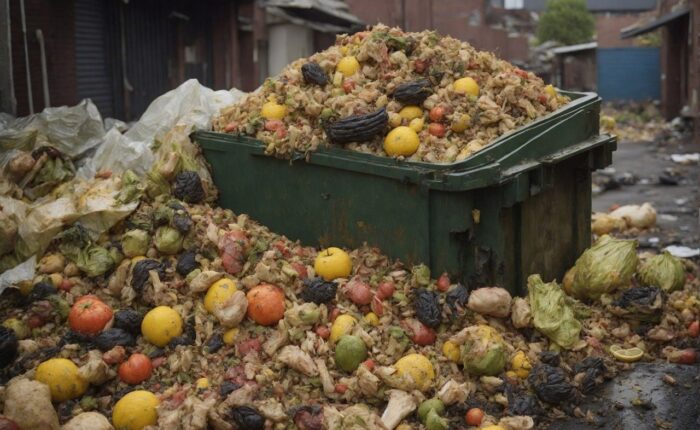Food Waste Diversion – Lets Share Food

Food Loss and Waste (FLW) is a major problem in Canada. Second Harvest – Canada’s largest food rescue charitable organization – recently released a report entitled “The Avoidable Crisis of Food Waste: The Roadmap” which describes how much and why FLW is happening throughout the life cycle of food products in Canada. Food loss refers to the loss of edible food at the production, post-harvest, and processing stages of the food chain while food waste refers to the discarding of edible foods at the retail and consumer levels.
The report notes that approximately 58% of food produced in Canada is lost or wasted each year. Avoidable FLW in Canada costs $49 billion CAD each year which is a cost of $1,766 CAD for an average Canadian household.
FLW also has a significant climate impact for Canada with about 56 million tonnes of emissions released into the atmosphere every year as a result of food waste. This is a significant figure given that Canada’s total 2019 pre-pandemic emissions was about 730 million tonnes of emissions.
Research has found that about a third of FLW could be salvaged and sent to communities in need across the country. Significant FLW occurs in households, restaurants, hotels, retailers, farms, and food processing/manufacturing facilities. As we continue to waste lots of food 4 million Canadians – including 1.4 million children – lack access to healthy food. Unfortunately, we currently have a culture of accepting food waste as the norm as there is no cost to disposing excess food in landfill while food diversion practices cost money. This culture of waste must change.
The Solution – Online Food Sharing Platforms
FLW can be reduced through the use of online platforms that connect suppliers who have excess food to organizations that distribute food to those in need.
Every stage of the food life cycle – consisting of food growth and gathering on farms, storage, processing and manufacturing, distribution, retail, and consumption – has unique challenges which contribute to FLW. For all these stages software platforms can be used to record FLW and then facilitate food diversion to organizations that can help the millions of Canadians who lack access to healthy foods. Monitoring FLW is important for each organization to know the size of their FLW problem. Current online food diversion platforms can then be used to reduce FLW.
The Second Harvest report surveyed businesses and found that “they’re willing to donate their surplus product, they just needed a system to make it easy and safe to connect with social service programs in their own communities.” Second Harvest thus created an online platform for businesses to donate food and charities to receive food. This platform – known as Food Rescue – diverts food which would otherwise be wasted and redistributes it to people in need. According to the site, “The food Second Harvest recovers is redirected to thousands of charities and non-profit organizations.”
Many other food diversion apps exist to help with reducing FLW.
Consider foodmesh.ca – currently serving the area in and near Vancouver, BC – which has an online business to business marketplace that connects those with excess food to a verified network of organizations that buy this food at reduced cost or to a charity as a donation.
Next, consider the OLIO app for consumers. According to its website, OLIO connects neighbours with each other and with local businesses to divert all types of food including “food nearing its sell-by date in local stores, spare home-grown vegetables, bread from your baker, or the groceries in your fridge when you go away.”
Another interesting app is the Flashfood app which allows users to find highly discounted food from local grocery stores, choose items, and pay for these items right within the app using a credit card. Many other food waste diversion apps exist online to reduce food waste as well as help people and the environment. Consider using one or more of these food sharing apps to help divert food waste and contribute to a radically different way of valuing excess food.
